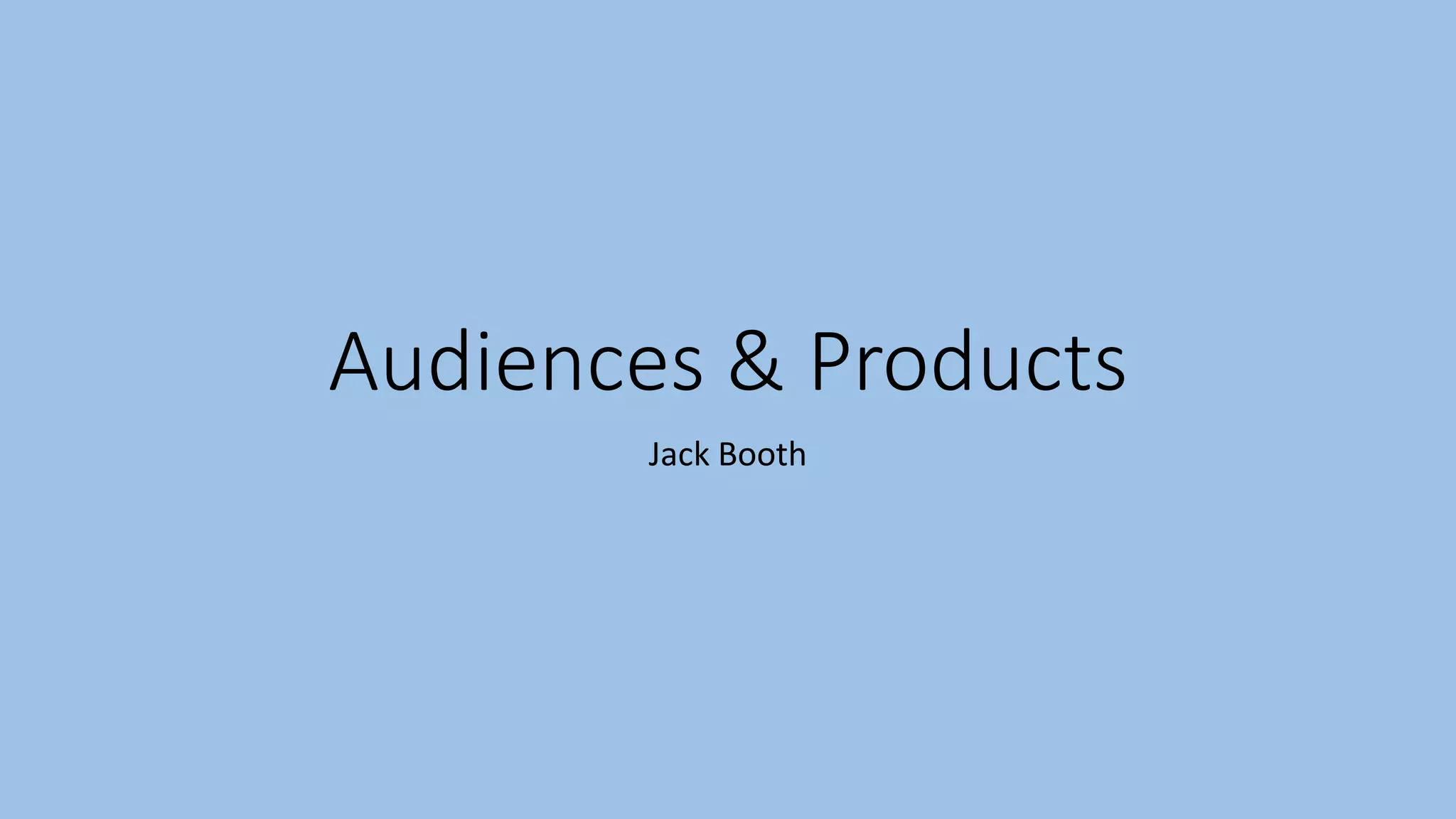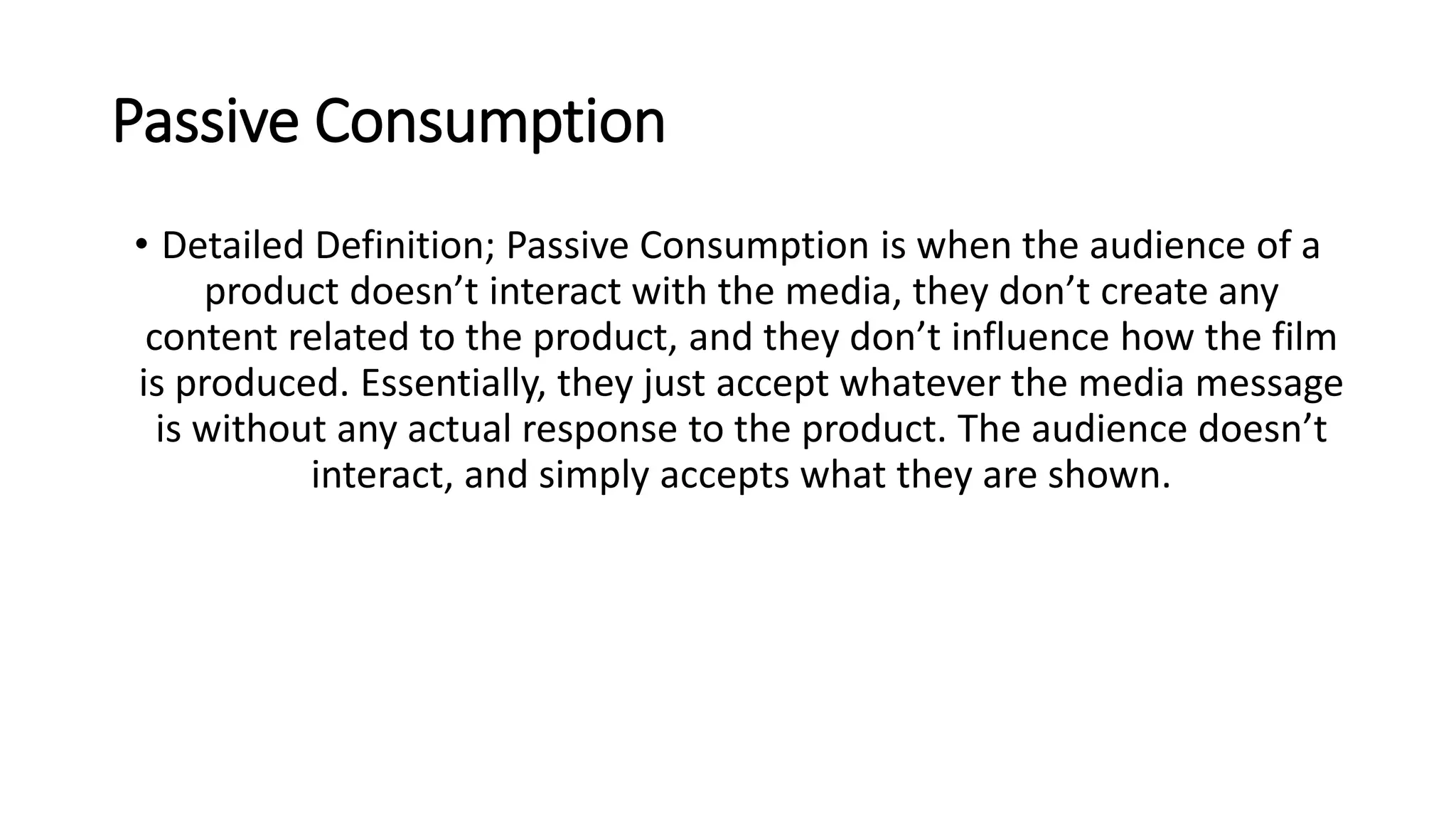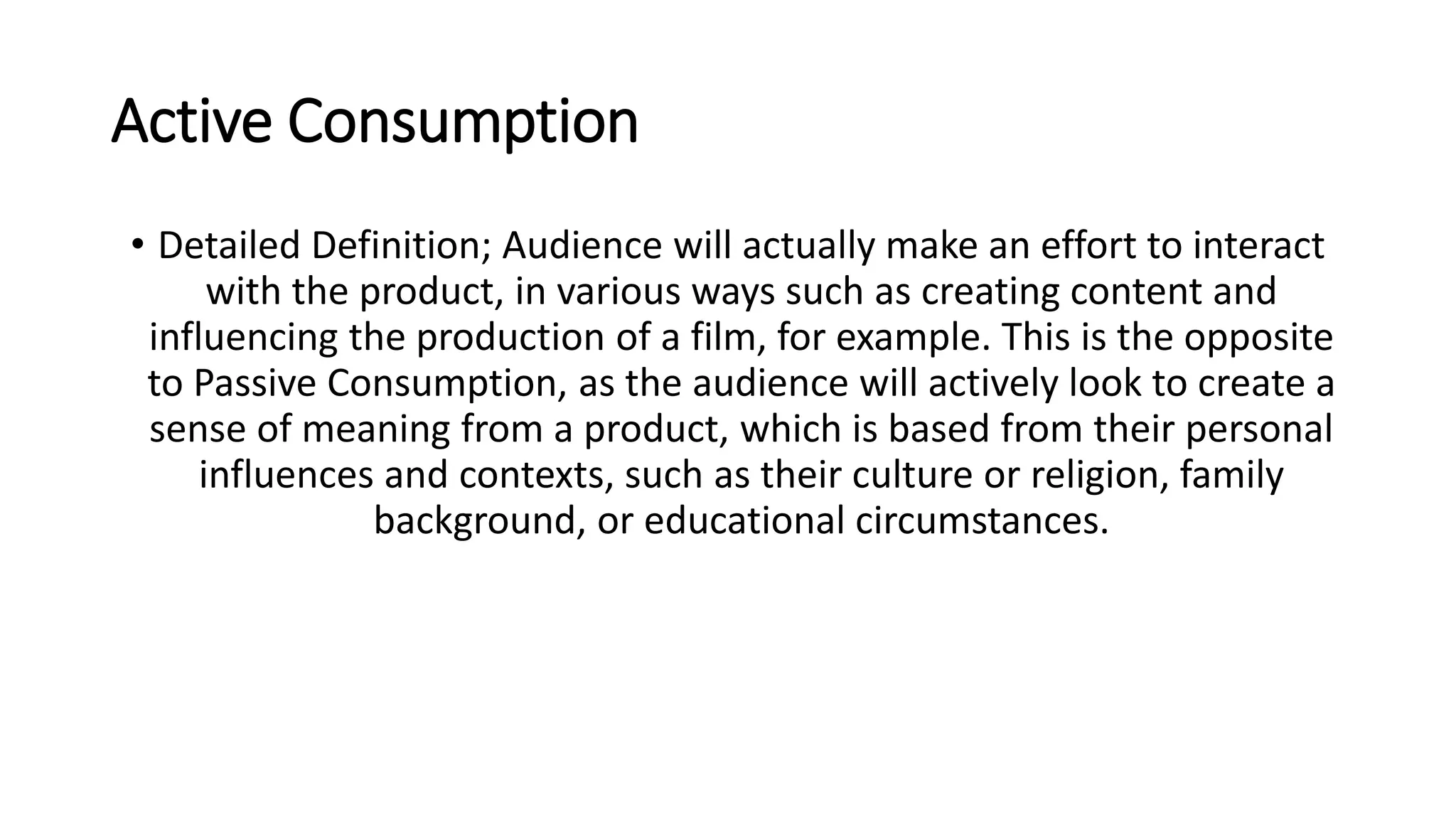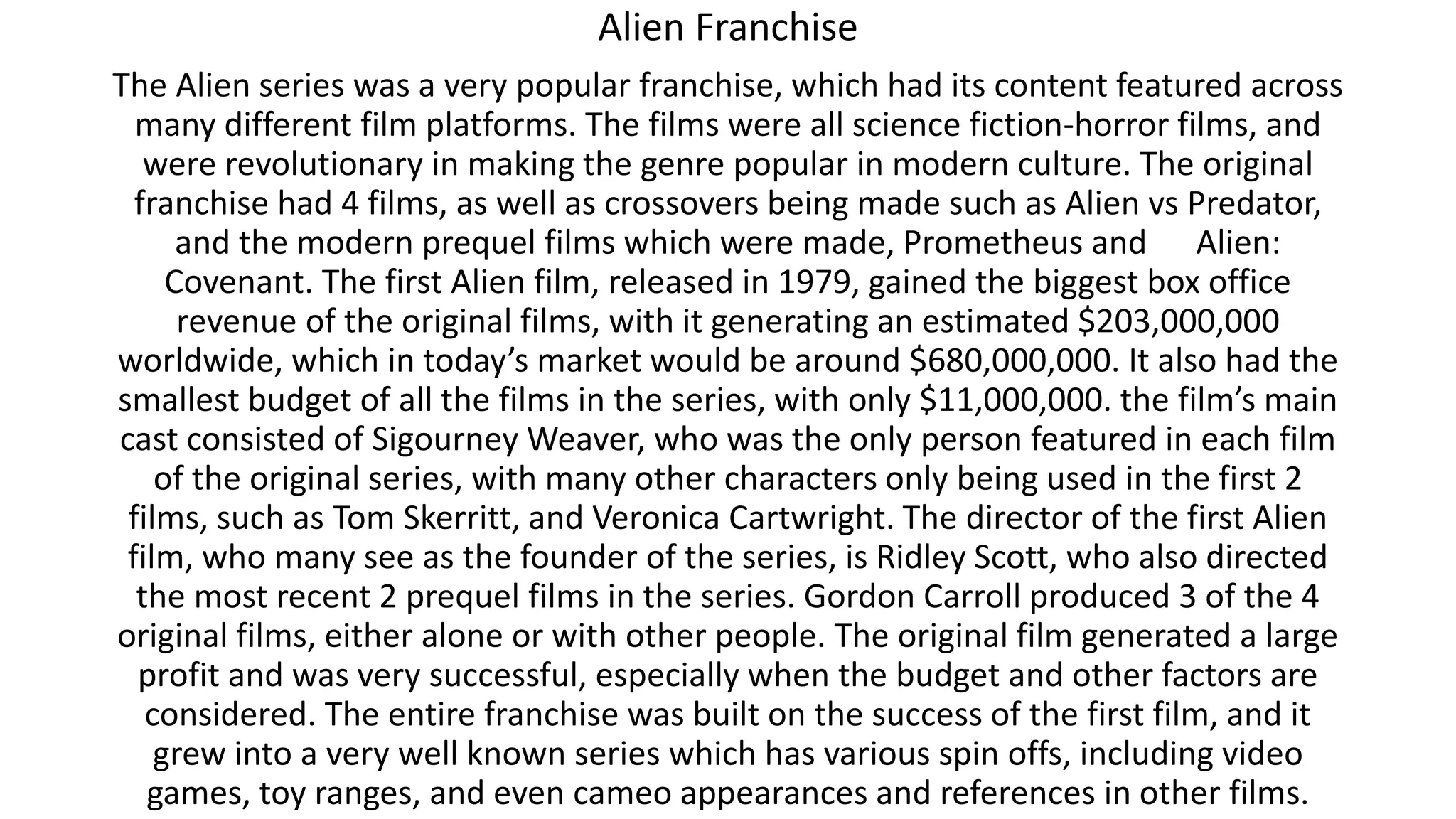This document discusses various theories related to audiences and media consumption. It defines passive consumption as audiences simply accepting media messages without response. The hypodermic needle model suggests audiences will immediately believe anything in media. Active consumption is when audiences interact with and influence media. Uses and gratifications theory explains why audiences consume media for information, identity, social integration, and entertainment. Reception theory looks at how audiences interpret encoded media messages based on their own experiences and decoding. Spectatorship theory examines how audiences make meaning based on their social, cultural, private, and desiring selves. Different frameworks can lead to varied interpretations of the same media. The document uses these theories to analyze audiences' interactions with the Alien film franchise.

















